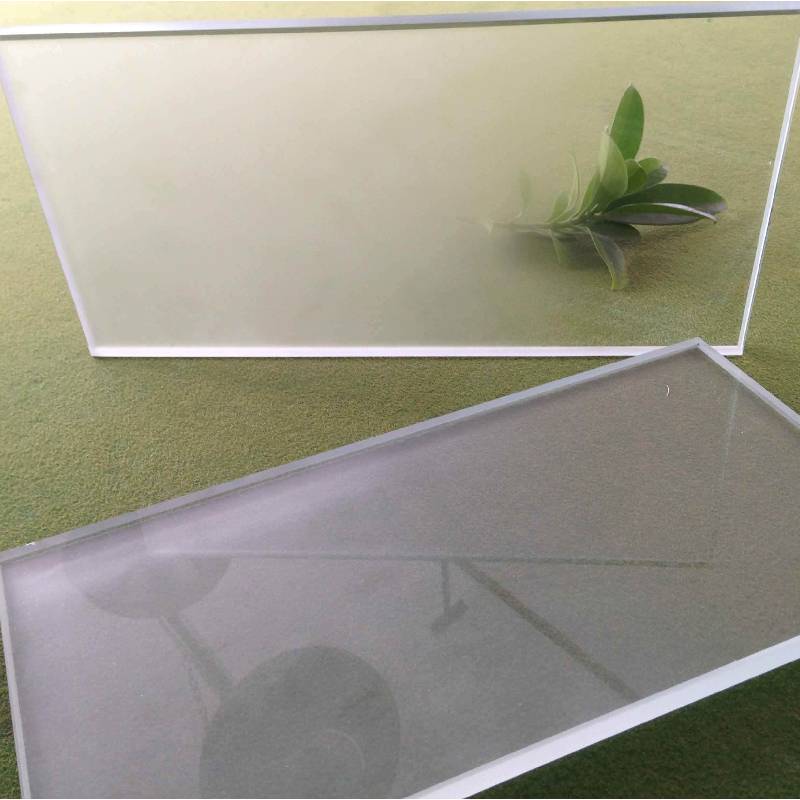

Reflective Float Glass An Innovative Solution for Modern Architecture
Reflective float glass is a remarkable innovation in the realm of architectural materials, merging functionality with aesthetics to create striking visual effects while enhancing energy efficiency in buildings. It has become increasingly popular among architects and designers who seek to fuse elegance with practicality in modern constructions. In this article, we delve into the characteristics, benefits, and applications of reflective float glass, illuminating its significance in contemporary architecture.
Understanding Reflective Float Glass
Reflective float glass is produced through the float glass process, where molten glass is floated on top of molten tin to create a smooth, flat surface. The reflective aspect comes from a thin, metallic layer added to the glass surface, which enhances its reflective properties. This special coating allows the glass to reflect sunlight and reduce glare while maintaining transparency and visibility from the inside. The result is a material that not only functions as a barrier to the elements but also adds an artistic dimension to architectural designs.
Advantages of Reflective Float Glass
1. Energy Efficiency One of the most significant benefits of reflective float glass is its ability to enhance a building’s energy efficiency. By reflecting a substantial amount of solar radiation, this type of glass reduces heat gain in interiors, which can lead to lower energy consumption for cooling systems. This quality is especially important in hot climates, where air conditioning can account for a large portion of energy costs.
2. Glare Reduction Reflective float glass effectively mitigates glare, making it a suitable choice for environments with high sunlight exposure. This feature creates a more comfortable atmosphere for occupants and enhances visibility by lessening the harsh contrasts between light and shadow.
3. Aesthetic Appeal The sleek, shiny surface of reflective float glass can transform the visual dynamics of any building. Its ability to mirror surroundings creates a sense of harmony with the environment, while also providing a modern look that appeals to contemporary design sensibilities. The glass comes in various tint options, allowing architects to customize the appearance to match a building’s style and purpose.

4. Improved Privacy The reflective quality of the glass provides an additional layer of privacy during the day, as it makes it difficult for individuals outside to see into the building. This is particularly advantageous for commercial and office spaces where confidentiality is crucial.
Applications in Architecture
Reflective float glass has found a variety of applications in modern architecture, ranging from large commercial edifices to residential buildings. Its use in skyscrapers is notable, where it contributes to the structure's dramatic skylines while facilitating energy savings. Many iconic buildings around the world incorporate this type of glass, using it to create stunning facades that are both visually captivating and efficient.
In residential settings, reflective float glass can be employed in windows, doors, and even glass railings. It allows homeowners to enjoy natural light while minimizing heat gain and ensuring privacy. Moreover, its durability and ease of maintenance make it a practical choice for both new constructions and renovations.
Conclusion
Reflective float glass represents a significant advancement in building materials, offering a blend of style, sustainability, and performance. As the architectural landscape continues to evolve, the demand for innovative solutions like reflective float glass is likely to grow, driven by the need for environmentally responsible construction and designs. Its ability to enhance energy efficiency, reduce glare, and add aesthetic value makes it an indispensable asset in modern architecture.
In a world where sustainability and visual appeal are paramount, reflective float glass stands out as a testament to the possibilities of combining beauty with functionality. As architects and designers increasingly embrace this material, the future of architecture looks brighter than ever, reflecting the aspirations of the communities and individuals it serves.